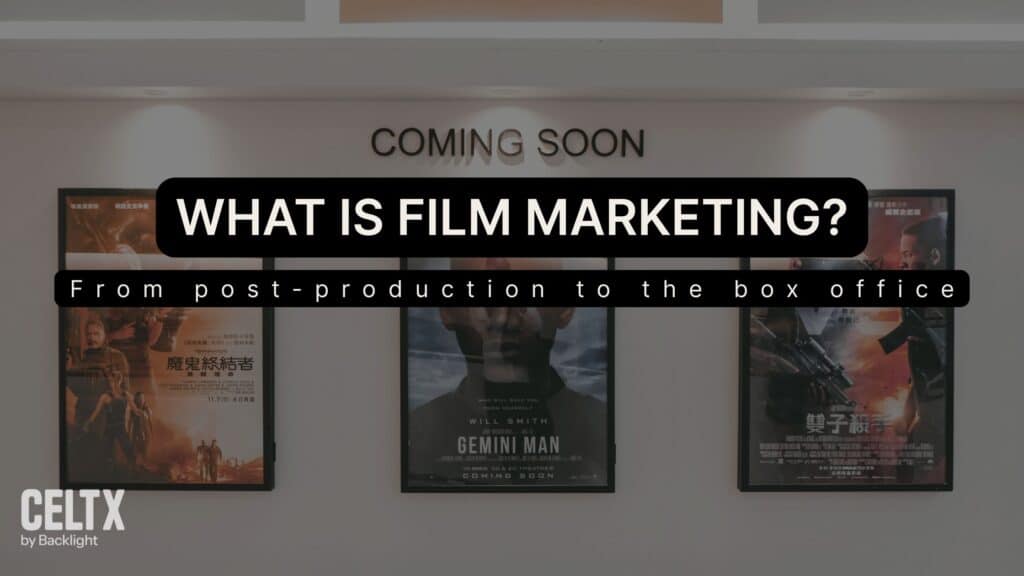
You’ve wrapped up post-production. The edit is locked, the color grade is rich, and the sound mix sings. You’ve got a film. Now what?
Well, now comes the part that determines whether anyone actually sees it.
Film marketing is often described as the final step in the filmmaking process, but that’s not quite true (as described in The 7 Stages of Film Production (And What Happens in Each) blog post).
Technically, exhibition (the act of showing the film to audiences) comes after marketing. But marketing is what gets you to exhibition. It’s the bridge between your finished film and the people who might love it.
Whether you’re aiming for a festival premiere, a streaming release, or a theatrical run, marketing is what ensures your film doesn’t just exist, it connects. It sparks curiosity and hopefully a sense of urgency for audience to buy a ticket or press play.
And in today’s blog, we’ll be breaking down what you need to effectively market your movie: a marketing plan checklist, strategies that work for indie filmmakers and studios alike, and how you can use tried and tested marketing principles to get your film seen by the right people.
So, let’s get planning…

Table of Contents
- Film Marketing vs. Distribution
- The Key Components of a Marketing Plan
- Film Marketing in the Post-Production Phase
- Budget, Budget, Budget
- Film Festivals and Word of Mouth
- Celtx’s Role in Production Management for Marketing
- FAQs
- Conclusion
Film Marketing vs. Distribution
Let’s clear up a common confusion: marketing is not distribution.
Marketing is all about creating awareness and interest. It’s the posters, trailers, social media campaigns, press kits, and buzz. Marketing says, “This film might change your life.”
Distribution is about logistics. It’s how your film gets into cinemas, onto streaming platforms, or into the hands of sales agents and buyers. Distribution says, “Here’s where you can watch the film that might change your life.”
Think of marketing as the invitation and distribution as the delivery. You need both, but they serve different purposes.
Many first-time filmmakers underestimate how separate these processes are. You might secure distribution, but without marketing, no one shows up. Or you might have a killer campaign, but without distribution, there’s nowhere for audiences to watch.
The strongest releases align both sides: a film marketing strategy that drives attention, paired with a distribution plan that ensures easy access.
Don’t believe us? Well, Erica Daley has done all the research on the impact advertising and marketing has in film successes. Find out more here.

The Key Components of a Marketing Plan
A solid marketing plan is like a map. It guides your film from obscurity to visibility, and ideally, to ticket sales or streams. Here are the essentials every filmmaker should cover:
1. Target Audience
Who is your film for? This isn’t just about demographics, it’s about psychographics: values, interests, and lifestyle choices.
Ask yourself:
- What do your ideal viewers care about?
- What other films do they watch?
- Where do they hang out online?
- What influences their decision to watch something?
For example, say you’ve made a horror short. Your audience might be Reddit horror forums, TikTok communities around ‘creepy stories’, and genre-specific festivals. On the other hand, if it’s a heartfelt indie drama, your audience might skew toward festivalgoers, Letterboxd cinephiles, or older audiences who frequent arthouse cinemas.
In short, knowing your audience helps you speak their language and show up where they’re already looking.
2. Branding and Identity
Your film’s identity is more than its genre. It’s the tine, the themes, the emotional promise. And it needs to be consistent across all marketing materials.
Posters
The first visual impression. A good poster communicates genre, mood, and intrigue in a single glance.
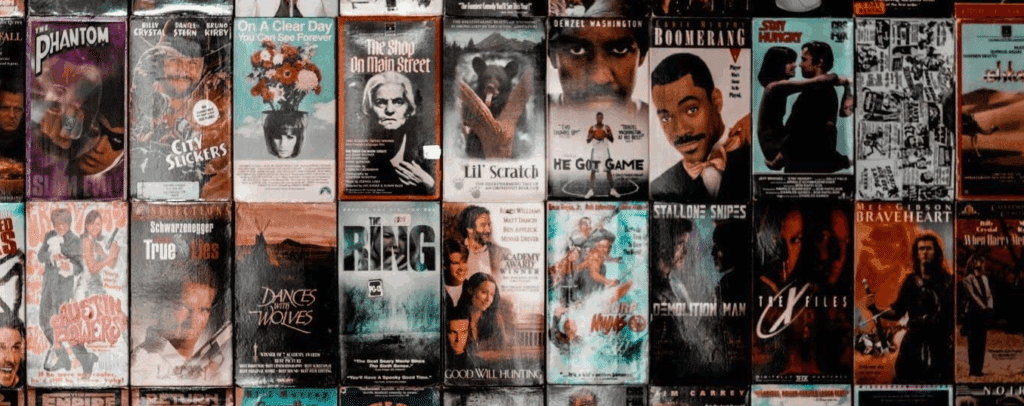
Trailers
Your film’s elevator pitch in motion. Trailers should tease, not spoil. And they should reflect the pacing and tone of the actual film.
Logline and Synopsis
These are your verbal hooks. They should be clear, compelling, and tailored to different platforms, for example IMDb vs. Instagram.
Think of your film as its own brand. Every touchpoint from the poster, down to the font you choose, communicates something about it. A gritty thriller with neon-soaked visuals demands a different campaign than a light-hearted rom-com.
3. The Marketing Funnel
Marketing isn’t just about shouting into the void. It’s about guiding people through a journey:
- Awareness (they hear about your film)
- Interest (they want to know more)
- Consideration (they watch the tailer, read reviews)
- Intent (they decide to watch)
- Action (they buy a ticket or press play)
Each stage requires different tactics, and different assets. For example:
- Awareness might come from social ads or festival buzz
- Interest grows through teasers and interviews
- Consideration deepens with strong reviews or influencer shoutouts
- Intent is secured with release dates, showtimes, and reminders
- Action is driven by a simple ‘buy now’ or ‘watch now’ button.
Now, the marketing funnel is no accident! Filmmakers with successful campaigns will walk their audiences through it deliberately. The Barbie (2023) whose marketing campaign was beyond genius. Check out Marcom Central’s case study here.

Not quite ready for the marketing stage of your film production process? Or need a hand selling your screenplay? Then check out our helpful guide How to Sell a Screenplay.
Film Marketing in the Post-Production Phase
Here’s the biggest misconception: marketing doesn’t start after post-production, but during it.
Why? Because the finished film dictates the campaign. The tone, pacing, performances, and themes all inform how you market it.
This is also when you start creating marking assets. These include:
- Behind-the-scenes footage
- Stills from the edit
- Quotes from cast and crew
- Mood boards and teaser clips
These materials are gold for social media and press kits, and they’re easiest to capture while the film is still fresh.
For example, behind-the-scenes clips of an actor preparing for a role can fuel TikTok teasers. A director’s notes about why the story matters can become a festival program blurb.
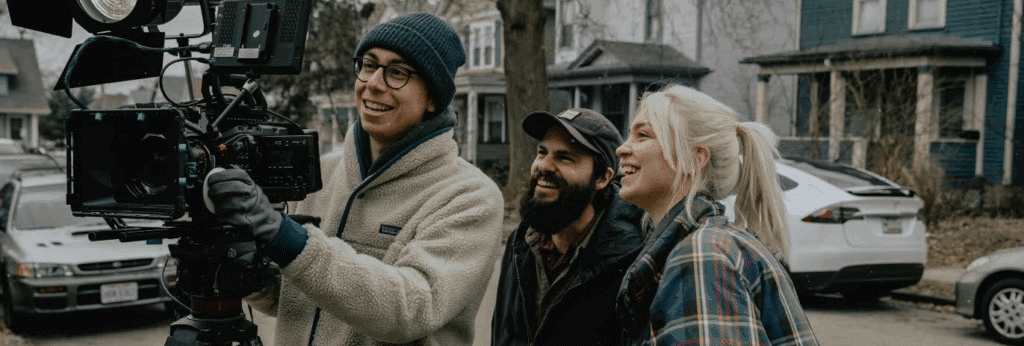
If you wait until the film is completely finished, you’ll miss opportunities to capture authentic content. So, plan what behind-the-scenes content you want to create before you start shooting!
Budget, Budget, Budget
One of the toughest realities is that marketing costs money. For indie films, marketing often gets ignores in the budget, but it shouldn’t.
A common rule of thumb in Hollywood is that marketing can cost as much as production itself. While that’s totally not realistic for indie projects (we hear you!), it’s worth remembering that without marketing, even the most beautiful film risks obscurity.
Budget categories that you should consider are:
- Poster and trailer design
- PR and publicity campaigns
- Festival submissions and travel
- Social media ads
- Website and email campaigns
- Premiere or release events
Even if you’re on a shoestring budget, allocate something! A $500 ad campaign targeted to the right audience can sometimes drive more impact than thousands blindly spent.
Film Festivals and Word of Mouth
Festivals are often the first marketing platform for independent films. They serve two purposes:
- A launchpad to reach critics, distributors, and industry insiders
- A word-of-mouth engine to generate buzz among film fans
Submitting to the right festivals is part of marketing strategy. While a horror short might thrive at Fantasia or Sitges, an experimental drama might do better at Berlinale.

If your movie is accepted into a festival (hooray!), you’ll need to maximize your presence there. Make sure to engage with your fellow attendees, use your well-earned laurels in all your marketing materials, and share as many photos, clips and Q&A moments online as possible.
Don’t underestimate the power of word of mouth. It remains one of the most influential forms of marketing. People trust people more than they trust ads.
Celtx’s Role in Production Management for Marketing
Okay, so you may have the perfect poster concept, the funniest behind-the-scenes blooper reel, or even the sharpest logline. But without a system to keep your assets, deadlines, and collaborators aligned, things are likely to slip through the cracks.
That’s where Celtx comes in! Yes, you may know Celtx primarily as a screenwriting platform, but our project management features extend far beyond the script stage. We support with your marketing workflows in ways that save time, reduce stress, and maximize your output.
See, we’re not just a pretty face!
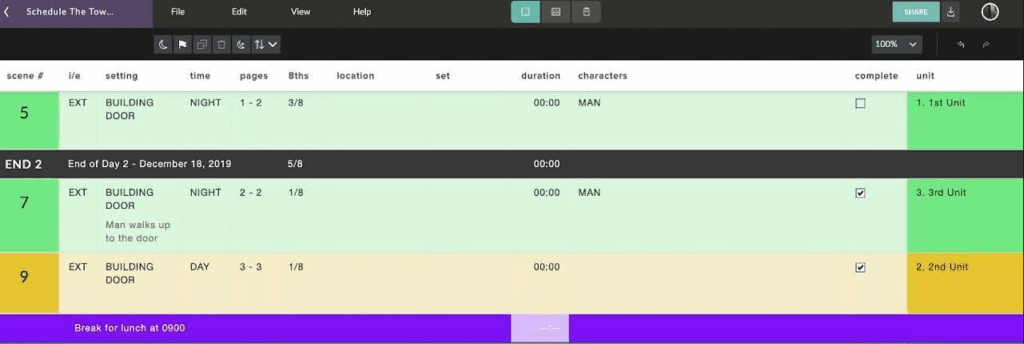
Let’s say you need to shoot a trailer or a behind-the-scenes featurette. Here are two things Celtx can help you with:
Schedule Marketing Shoots Alongside Production
As we’ve already mentioned, one of the smartest moves you can make as a filmmaker is to capture marketing content during principal photography.
This could mean grabbing a few behind-the-scenes clips, staging a poster photoshoot on set, or recording interviews with the cast while they’re still immersed in the project.
With Celtx, you can:
- Integrate marketing days directly into your shooting schedule.
Or…
- Integrate your marketing shoots into your call sheets, ensuring your team knows when to stay late for a quick trailer pickup or poster photoshoot.
Scaling up or Down for Indie vs. Studio Projects
One of our biggest strengths here at Celtx is scalability.
For indie filmmakers, Celtx can act as an all-in-one hub, allowing a single person (or small team) to keep both their production and marketing assets organized without hiring extra staff.
And for larger productions, Celtx provides a collaborative infrastructure where multiple departments from creative and PR to distribution, can all stay aligned on schedules and deliverables.
The Big Picture
While Celtx is all about production efficiency, we’re also committed to helping you future-proof your film’s visibility. By integrating marketing workflows into the same platform, you used for pre-production and filming, you’re making sure the story you worked so hard to tell has the tools and structure it needs to actually reach its audience.
FAQs
Ideally, during pre-production. You can start building buzz early, especially if you have a unique concept, notable cast, or a strong visual identity. But the bulk of marketing happens during post-production and beyond.
Marketing is about visibility. Distribution is about access. Marketing gets people interested; distribution gets the film to them.
Depending on your budget and goals, your team might include:
– A marketing strategist
– A graphic designer (for posters, social assets)
– A trailer editor
– A publicist or PR agent
– A social media manager
– A sales agent (who often overlaps with distribution)
On indie projects, these roles are often combined or handled by the filmmaker themselves.
Any material used to promote your film. This includes:
– Posters
– Trailers and teasers
– Behind-the-scenes content
– Cast interviews
– Social media graphics
– Press kits
– Loglines and synopses
Assets should be tailored to your audience and platform. A TikTok teaser might look very different from a festival press kit.

Conclusion
You’ve poured your heart into your film. Don’t let it disappear into the void with sloppy marketing, or even worse, no marketing at all. Marketing isn’t just a business necessity but an act of care for a project you’ve worked hard on. Honor your story by giving it the best chance to connect.
Film marketing is the bridge between post-production and the box office, between your private edit suite and the audiences waiting to discover your work. So, whether you’re working with a distributor or going DIY, a thoughtful marketing plan can make the difference between a film that’s seen and one that’s forgotten.
As you finish your film, don’t just ask: “Is it ready to show?” Ask: “Is it ready to be shared?” Because at the end of the day, a film isn’t complete until it finds its audience.
Ready to get your project made and seen? Start for free today.
Up Next:
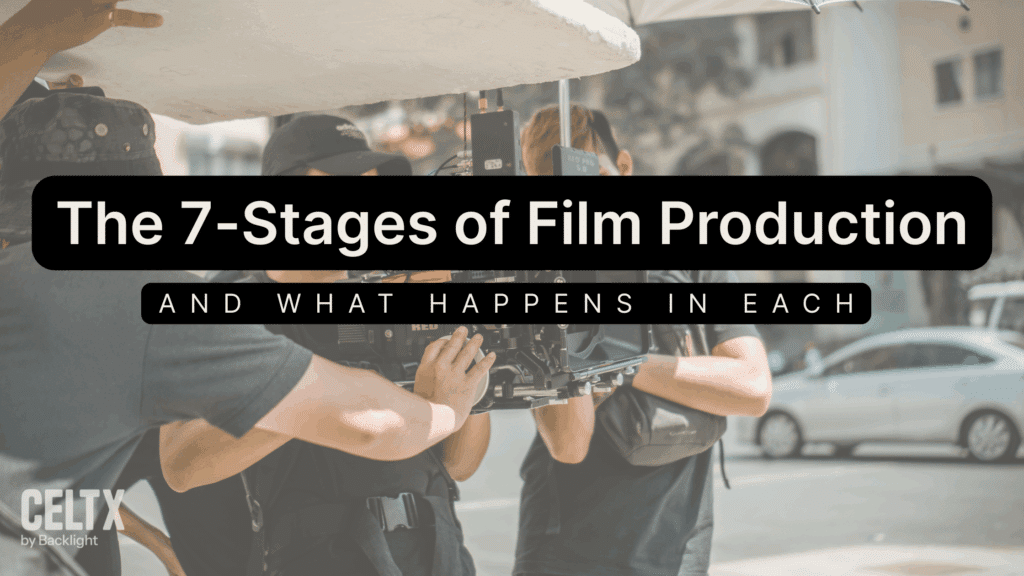
The 7 Stages of Film Production (And What Happens in Each)
See how marketing fits into the bigger picture of production — from development to the final stage: exhibition.
